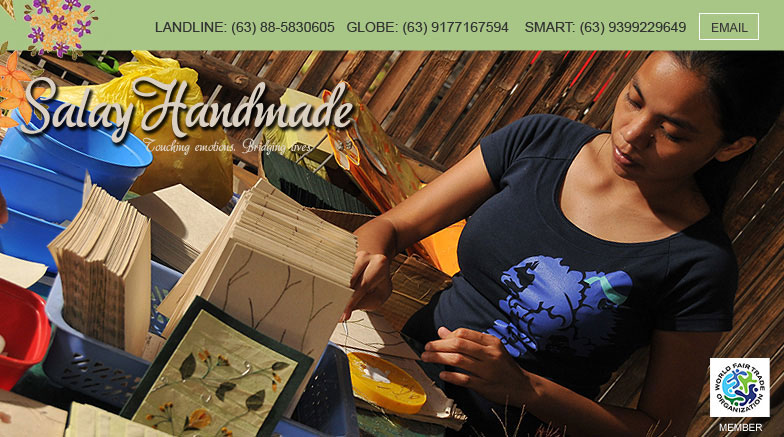
|
Our Raw Materials
Short HistoryWhen we started handmade papermaking in 1987, we only knew that we could use our plentiful waste grass cogon (Imperata cylindrica exaltata) as our sustainable raw material. Thus, it became part of our original mission to eradicate this pest grass and turn it into something beautiful. While doing so, more land becomes free for farmers to plant crops and earn income.
Through time and experimentation, and from tips gained during our trips to Japan and India, we learned of the many non-wood fibers excellent for papermaking that were available to us. We found it ironic when Japan papermakers bowed and thanked us in Japan when we visited them in 1992 for the export of abaca and salago bark to their country. They were the first who introduced us to the rich natural resource for papermaking that our country has in abundance. At that time, we didn’t know anything about salago and very little about abaca. Upon our return to the Philippines, we went to the Fiber Industries and Development Authority (FIDA) to get information and samples of our precious and beautiful abaca fiber and salago bark. Then, on our own, we experimented using different formula, producing different thicknesses and looks with various grades of abaca fiber, salago bark as well as other fibers from pineapple leaves, gumamela bark, banana stalks and fibers, even sawdust! We have them all around us!
We noted results that led us to use what was the best in terms of aesthetics, its conversion, economy in production and more importantly how each kind of raw material complement each other when used together.
In 2003, we started using more of abaca fibers (Musa textelis) as the base of our handmade paper for its durability, high recovery rate and sustainable commercial availability. By then, we had also almost used up the cogon grass in our town and in the towns nearby! Today we only use cogon grass when the look and feel of the paper calls for it, or when our clients ask for it specifically from our samples.
Paper Characteristics
As proven, Salayhandmade paper is quite good in terms of sizing properties. It does not cause bleeding of ink when written on. It is also computer friendly, which means it can be printed on by commercial or home-use printers.
Our paper is acid free and we take great pains in ensuring that we maintain this very important characteristic of handmade paper. It is the kind that archives and museum are looking for. Our handmade paper gets better through the years!
The thickness and grammage of EVERY SINGLE SHEET of handmade paper we produce is measured with a digital weighing scale before they are sent out. We have four general classifications: 180 gsm, 140 gsm, 90 gsm, and ultrathin. Quality control is thorough, although we allow ±5% tolerance since these are handmade.
The “right” side of the handmade paper is usually the rougher side, and its most unique characteristic is its deckle edge. We make many kinds of textures and designs using organic materials and can simulate different looks.
We now have hundreds of different formulations in file from our experimentation over the years. We have found that experience is a good teacher, indeed. This is especially true in dyeing. 22 years of making colored paper using azofree dyes give us enough background and skill to get the colors desired. Again tolerance level for color hues is ±5% since we make them by batches. So many factors affect color or dyeing, including season, climate, process (air or steam drying), even the strength of the wind! It is one of the amazing joys of handmade products, though it may baffle the perfectionists.
But then again, nature is seldom consistent… and that is where its perfection and uniqueness come from!
![]()